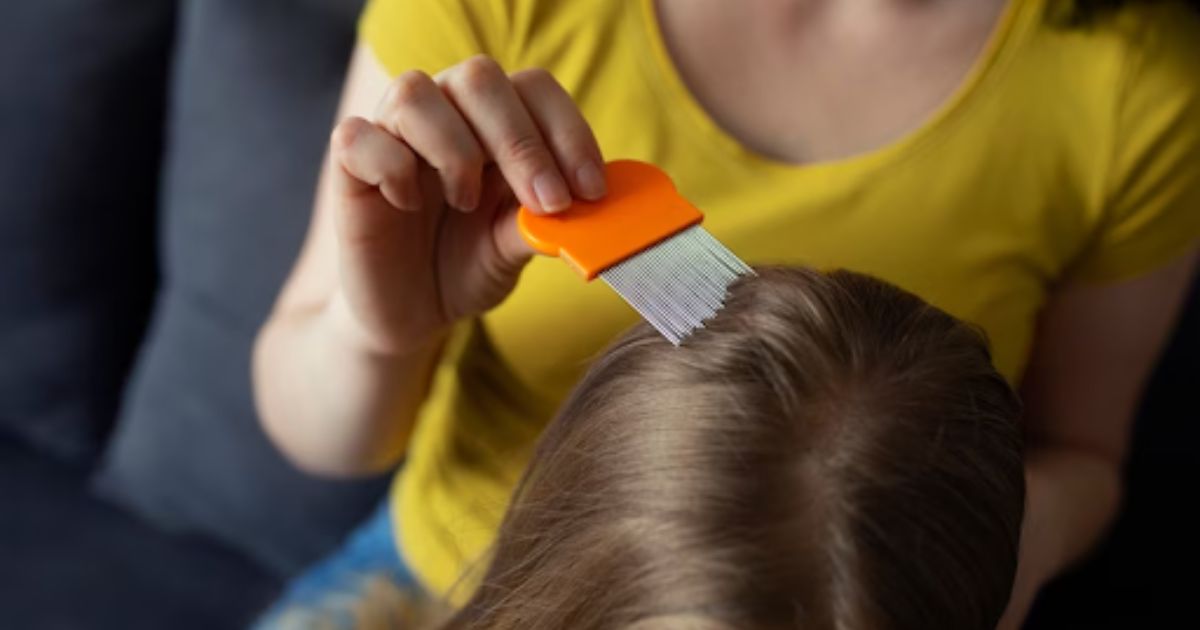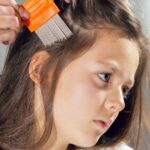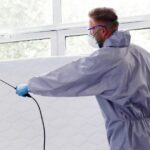Lice nits, also known as louse eggs, are minuscule and notoriously pesky parasites that can infest human scalps. Identifying and understanding these tiny eggs is crucial in effectively combating and preventing the spread of lice. In this blog post, we will delve into the appearance of lice nits and provide useful tips for their identification.
Table of Contents
What Are Lice Nits?
Lice nits are the eggs laid by adult female lice, which are wingless insects that primarily infest the scalp. They attach their eggs firmly to the base of the hair shafts, close to the scalp, using a sticky substance secreted by the female louse. Lice nits are tiny, oval-shaped, and typically measure about 0.8 to 1.2 millimeters in length. They have a translucent appearance and may vary in color, ranging from off-white to yellowish-brown.
Where To Look For Lice Nits
To identify lice nits, it is important to know where to look for them. Female lice prefer warm areas close to the scalp to lay their eggs. Pay attention to the following areas:
- Behind the Ears: The area behind the ears provides an ideal environment for lice nits due to its warmth and proximity to the scalp. Inspect this area thoroughly.
- Nape of the Neck: Lice nits often cluster near the nape of the neck as it offers a warm and sheltered spot.
- Hairline: Lice nits may be found along the hairline, particularly around the forehead and temples. They can be nestled against the hair strands, making them difficult to spot.
- Crown of the Head: Lice nits can also be present on the crown of the head, especially if the infestation is severe. Check this area carefully.
- Underneath the Hair: Lice nits are most commonly found within ¼ inch (or 0.6 cm) from the scalp. They attach themselves firmly to the hair shafts, close to the scalp, using a sticky substance secreted by the female louse.
It is important to note that lice nits are generally found within a few centimeters from the scalp and are less likely to be present on the ends of the hair strands. They have a preference for warm and protected areas where they can incubate and develop into nymphs.
When checking for lice nits, it is recommended to use a fine-toothed comb or a specialized lice comb. These combs can help separate the hair strands and facilitate the identification and removal of lice nits. Remember to inspect these areas thoroughly and be patient as lice nits can be challenging to spot due to their small size and resemblance to dandruff or other debris. It is also important to have good lighting to make sure you are able to see the nits clearly.
Identifying Lice Nits
Identifying lice nits can be a challenging task due to their small size and close resemblance to dandruff or other debris. However, there are some key characteristics that can help distinguish them:
- Size and Shape: Lice nits are tiny, oval-shaped eggs that adhere tightly to the hair shafts. They are about the size of a pinhead and may appear as small white or yellowish specks.
- Color: Lice nits can vary in color, ranging from off-white or cream to yellowish-brown. When freshly laid, they often appear lighter in color, and as they mature, they may darken.
- Translucency: Lice nits have a translucent appearance, meaning they are semi-transparent. When held up to the light, they may have a slight shine or glow, making them stand out from surrounding debris such as dandruff or dirt.
- Attachment: Unlike dandruff or other debris that can be easily flicked off, lice nits firmly attach themselves to the hair shafts near the scalp. They cannot be easily removed without using a fine-toothed comb or specific treatment methods, offered by professionals.
Indicators of Lice Infestation and Treatments
While identifying lice nits is essential, it’s important to consider other signs of lice infestation as well. These indicators can include:
- Itching: Lice bites can cause itching and irritation on the scalp, often more noticeable behind the ears and at the nape of the neck.
- Crawling Sensation: Some people may experience a crawling or tickling sensation on their scalp due to the movement of lice.
- Adult Lice: Adult lice are about the size of a sesame seed and can sometimes be seen moving quickly on the scalp or hair.
What to Do if Lice Nits Are Found
If lice nits are identified, prompt action should be taken to address the infestation.
- Wash and Clean Personal Items: Launder all bedding, clothing, and recently used personal items such as combs, hair accessories, and hats in hot water to kill any lice or remaining eggs.
- Inform Close Contacts: Inform close contacts, especially those who have had direct head-to-head contact, to check for lice and treat themselves if necessary.
- Consult a Professional: At The Lice Clinics, with convenient locations in Greenville, Anderson, and Spartanburg, we are here to help you become lice-free. When it comes to lice treatments, we are the experts. Having lice is extremely common and The Lice Clinics is here to make sure you do not suffer with them for too long. Our team offers multiple treatment plans. Our most popular plan utilizes a device called “Lice Tech”, a 100% guaranteed lice removal device. This device uses controlled heated air to dehydrate and kill lice and their nits. Given its effectiveness, you can leave our clinic assured that you and your family will be lice-free.
Looking for more information about our lice clinics? Contact our team of professionals today to find the best treatment plan for you.


